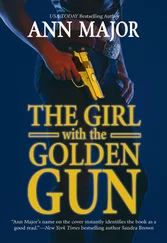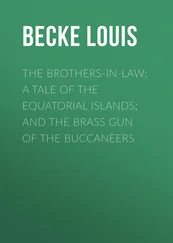He later canceled the demonstration. The colonel was a victim of jet lag, Moore explained; he had napped through the afternoon.
The aftermarket has so much to offer that Nicholas Elliot need not have gone to all the trouble of making the combat accessories police found in his backpack. With a little effort, he could have ordered them directly from S.W. Daniel’s mail-order catalog. It offered a brass catcher, complete with see-through bag and Velcro fastener; an official Cobray “assault sling,” wrist strap, and rear sling collar (“Get Super Control By Adding These Accessories,” the catalog said); “fake” silencers; slotted barrel extenders; and flash suppressors, designed to keep that all-too-detectable muzzle flash to a minimum. For $127.95 Cobray enthusiasts could also order a screw-on barrel-and-grip assembly to make the Cobray M-11/9 resemble “the fabled Thompson” machine gun. Instead of jungle-clipping his magazines with tape, Nicholas could simply have ordered a plastic magazine joiner tailored to the purpose. S.W. Daniel named this product Double Trouble.
The catalog asked, “Can You Imagine 64 Rounds?”
♦ ♦ ♦
Two institutions share much of the responsibility for cultivating the anything-goes attitude of firearms makers and the aftermarket bazaar. They have declared themselves each other’s enemy, but together both served as a kind of cultural cheering squad, nudging Nicholas Elliot and his Cobray along their path to Atlantic Shores.
The first is the National Rifle Association.
To people who dislike guns, the NRA is the Great Satan. They see its influence in every act of gun-related legislation and in every political race. Although its impact on electoral politics has been greatly inflated, the association has indeed been influential in lobbying against firearms regulation, as when it diminished the authority of the Gun Control Act of 1968 by promoting the McClure-Volkmer Act. Where the NRA has been most influential, however—and where its influence has been least acknowledged or appreciated—is in defining the vocabulary of the firearms debate and thus, in a sense, winning the debate before it even began.
The NRA accomplished this bit of intellectual gerrymandering by deftly marketing an ideology that posits any and all firearm regulation as a direct challenge to the U.S. Constitution and, by inference, to America itself. In this ideology, all guns are equal, be they Cobray pistols having no utilitarian value or the Glocks now embraced by so many police departments; guns are to be kept in readiness to repel invaders or—and this is a real prospect to the hard-liners who run the NRA—to resist the U.S. government itself; regulation of firearms is necessarily the first step toward confiscation of all firearms. Soon after I joined the NRA in 1993, I received my official NRA “Member Guide,” which stated the NRA’s position in unequivocal terms: “Any type of licensing and computer registration scheme aimed at law-abiding citizens is a direct violation of Second Amendment rights, serves no law enforcement purpose, and ultimately could result in the prohibition and/or confiscation of legally owned firearms.” In a 1975 fund-raising letter to NRA members, retired general Maxwell E. Rich, executive vice president, warned of the true consequences of gun control: “My friend, they are not talking of ‘Control’; they want complete and total ‘Confiscation.’ This will mean the elimination and removal of all police revolvers, all sporting rifles and target pistols owned by law abiding citizens.” He asked, “What would the crime rate be if the criminal knew our police were unarmed…?”
At times the NRA has even sought to link support for firearm regulation to Communist sympathies, as in 1973 when the NRA’s American Rifleman magazine described the “Rules for Revolution,” a never-authenticated document purported to set out the principles by which Communist cells could attain world control. The tenth rule, the magazine said, called for “the registration of all firearms on some pretext, with a view to confiscating them and leaving the population helpless.”
On this battlefield anyone who advocates firearms regulation finds himself immediately on the defensive, forced into arcane debate over the exact meaning of the Second Amendment, and branded an enemy of The People.
An important effect of the NRA’s propaganda was to arm even the least articulate of gun owners with a snappy response that allows them to readily deflect unfriendly challenges from the unpersuaded and at the same time to avoid having to think about what kinds of firearms regulations might indeed ease the national crisis. (To the NRA, of course, guns are not the crisis. People are. More jails and swifter prosecution will solve the problem of gun violence.) In this intellectual desert, the mere act of possessing or manufacturing a gun, even a Cobray M-11/9, becomes a noble and patriotic undertaking.
The NRA was not always the paranoid, Constitution-thumping entity it is today. Nor is its current radicalism shared by the great mass of its members, many of whom simply join to take advantage of the organization’s broad array of grass-roots services or merely to get the NRA hat (mine is black with the NRA eagle insignia stitched in gold thread). The NRA is not the monolithic, omnipotent force of popular imagination. It is two organizations, and only by understanding this can one come to understand the fervor with which the association opposes even the simplest efforts at impeding the flow of guns from the good guys to the bad.
The NRA was founded in New York in 1871 by William Conant Church, a former New York Times war correspondent and soldier, and Gen. George Wingate, with the rather modest goal of sharpening the marksmanship skills of the New York National Guard and Guard units in other states by promoting a system of rifle practice and establishing rifle ranges. It remained a small, struggling organization until 1905, when federal legislation allowed the United States to sell surplus military weapons at cost to rifle clubs and made the NRA responsible for determining which clubs were qualified to acquire the guns. A 1911 amendment allowed the government to donate the guns to such clubs free of charge. Needless to say, NRA membership began to rise.
The association began attempting to influence legislation in 1934, in response to the increased clamor for firearms regulation that resulted in the National Firearms Act, which banned the sale of unregistered machine guns and sawed-off shotguns. The act was the NRA’s first defeat, but also its first victory. As originally proposed, the act would have regulated the sale of pistols and handguns as well. But the NRA objected and, in its first demonstration of how a relative few ardent loyalists can shape a nation’s laws, launched a lobbying and letter-writing campaign that convinced Congress to limit the retrictions to “gangster” weapons.
By 1946, the association had all of 155,000 members. In 1956, the NRA amended its New York State charter to include a set of objectives broader than those it had outlined in 1871. Now it sought “to promote social welfare and public safety, law and order, and the national defense; to educate and train citizens of good repute in the safe and efficient handling of small arms,” and, broadly, “to encourage the lawful ownership and use of small arms by citizens of good repute.”
The NRA was still largely a sportsman’s organization, promoting target shooting, hunting, and hunter’s rights. It might have kept to this moderate course if not for the assassination of John F. Kennedy in 1963, which prompted a horrified and heartbroken nation to call for gun control. The NRA, now galvanized by a threat to its members’ favorite pastimes, began attacking controls and pressuring legislators to oppose them, while sidestepping the fact that Lee Harvey Oswald acquired his rifle by mail through an advertisement in the American Rifleman . Nonetheless, Congress passed the Gun Control Act of 1968.
Читать дальше
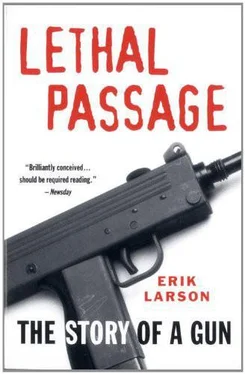
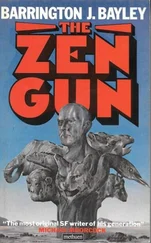
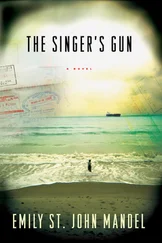

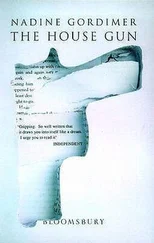

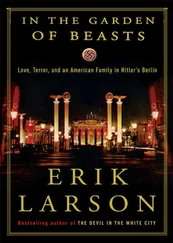

![Ричард Деминг - Whistle Past the Graveyard [= Give the Girl a Gun]](/books/412176/richard-deming-whistle-past-the-graveyard-give-t-thumb.webp)
